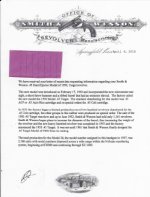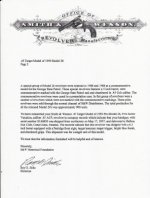I was reading a gunrag article about the S&W 1950 Target chambered in .45 ACP.
The author included the Highway Patrolman, and .44 Special Model 24 as "1950" models, and while they all do have similar features; N-frame, skinny barrel, adjustable sights, I'd never thought of them as being different chamberings of the same model.
Did the .38-44 Outdoorsman stay in the line-up long enough for there to be a post-war version that could be considered another variation on "1950", and is it correct to lump them together; different chamberings of the same gun?
The author included the Highway Patrolman, and .44 Special Model 24 as "1950" models, and while they all do have similar features; N-frame, skinny barrel, adjustable sights, I'd never thought of them as being different chamberings of the same model.
Did the .38-44 Outdoorsman stay in the line-up long enough for there to be a post-war version that could be considered another variation on "1950", and is it correct to lump them together; different chamberings of the same gun?


